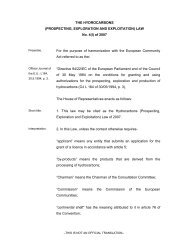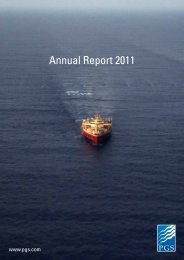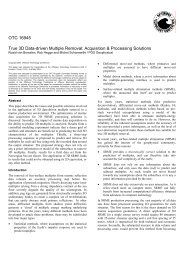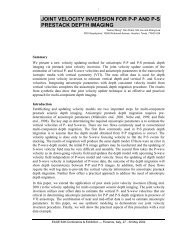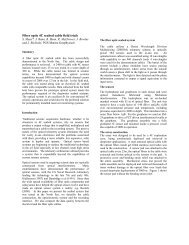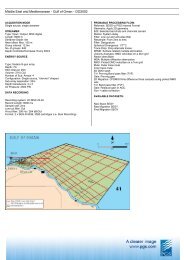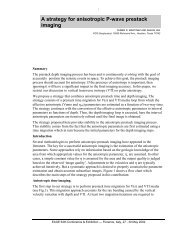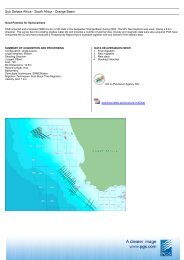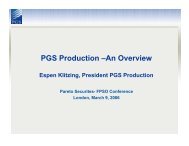Arrow Prospectus - PGS
Arrow Prospectus - PGS
Arrow Prospectus - PGS
Create successful ePaper yourself
Turn your PDF publications into a flip-book with our unique Google optimized e-Paper software.
ARROW SEISMIC ASA – INITIAL PUBLIC OFFERING<br />
Hedging<br />
The Group has decided to not use hedging according to IAS 39, Financial Instruments; Recognition and<br />
measurement.<br />
Derivative financial instruments which are not classified as hedging instruments are classified as fair value<br />
through profit or loss and are measured at fair value. Changes in fair value are recognised in profit and loss.<br />
An embedded derivative will be separated from the host contract and classified as a derivative if the following<br />
conditions are fulfilled:<br />
• The economic characteristics and risks of embedded derivatives are not closely related to those of the<br />
host contract.<br />
• Separate instruments with similar terms as the embedded derivatives exists, which satisfy the conditions<br />
for a derivative<br />
• The combined instrument (host contract and embedded derivative) is not measured at fair value through<br />
profit and loss.<br />
8.3.10 Research and development<br />
Expenses related to research and development are recognised in the profit and loss statement when they are<br />
incurred. Expenses related to development are recognised in the profit and loss statement unless the following<br />
criteria are met in full:<br />
• the product or process is clearly defined and the cost elements can be identified and measured reliably;<br />
• the technical solution for the product has been demonstrated;<br />
• the product or process will be sold or used in the operations;<br />
• the asset will generate future financial benefits; and<br />
• there are adequate technical, financial and other resources to complete the project.<br />
When all the above criteria have been met, the capitalisation of expenses related to development start. Expenses<br />
that have been charged against income in earlier accounting periods are not capitalised. Expenses that are<br />
capitalised include costs of material, direct wages and a part of direct assignable common expenses. Capitalised<br />
development costs are measured at cost less accumulated depreciation costs and impairment losses.<br />
Capitalised development costs are depreciated on a straight line basis over the estimated useful live.<br />
8.3.11 Provisions<br />
Provisions are accounted for in accordance with IAS 37, Provisions, Contingent Liabilities and Contingent<br />
Assets. Provisions are recognised when, and only when, the company has an existing liability (legal or assumed)<br />
as a result of events that have taken place, it can be demonstrated as probable (more likely than not) that a<br />
financial settlement will be made as a result of the liability, and the amount can be measured reliably. Provisions<br />
are reviewed at each balance sheet date and the level reflects the best estimate of the obligation. When the time<br />
factor is insignificant, the size of the provisions will be equal to the size of the expense required for redemption<br />
from the obligation. When the time factor is significant the provisions will be equal to the net present value of<br />
future payments to cover the obligation. Increases in provisions due to the time factor will be presented as<br />
interest expenses.<br />
8.3.12 Equity<br />
Liabilities and equity<br />
Financial instruments are classified as liabilities or equity in accordance with the underlying financial realities.<br />
Interest, dividends, gains and losses related to financial instruments classified as liabilities will be presented as<br />
an expense or income. Distributions to the holders of financial instruments that are classified as equity will be<br />
recorded directly against equity. When rights and obligations related to how distributions from financial<br />
instruments are made are dependent on certain types of contingent events in the future that lie beyond the control<br />
of the issuer and holder, the financial instrument will be classified as a liability unless the probability that the<br />
issuer must contribute cash or other financial assets is remote at the time of issuance. In such cases the financial<br />
instrument will be classified as equity.<br />
60



